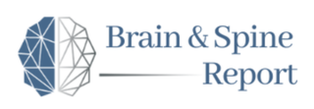|
A guide for kickstarting your AANS Medical Student Chapter. Throughout the past decade, medical student neurosurgery interested groups around the United States have rebranded themselves as AANS Medical Student Chapters. Closer affiliation with the parent organization has fostered medical student involvement in organized neurosurgery. However, very little guidance on chapter leadership and function exists beyond the steps of initial chapter creation. The Weill Cornell Medicine chapter has undergone extensive growth over the last four years as our team of students has worked to establish an identity and purpose for the AANS Medical Student Chapter. Here, we outline the elements that successfully transformed our chapter from little annual activity to one with passion and drive to innovate and include. Through our experience, we hope that other AANS Medical Student Chapters will similarly seek their own identity and greater purpose.
Leadership and Structure There is no driving force in this world greater than leadership. Leadership is not being the best, it’s bringing the best out of everyone around you. Leadership is not about working the hardest, it’s about inspiring the team to do more than the sum of its parts. Coming out of the Marine Corps, I had fresh ideas and I was excited to join our AANS Medical Student Chapter, which made my rejection from the chapter board sting that much deeper as a first-year medical student. The notion that executive board positions were reserved for senior students marginalized myself and other first-year classmates and consequently led to our minimal involvement that year. The following year, the executive board went in a variety of directions and our AANS Medical Student chapter started to fade. This was our time to rethink and rebuild, and that started with our leadership structure. We did away with the oligarchy and established class leadership boards with a relatively open-door policy. Every class now has its own group of student leaders. At the start of every semester students have the option to remain on their class board or move on to other interests. This format encourages collaboration and allows for a more organic development of individual leadership. In keeping with the AANS Medical Student leadership format handed down to us, the chapter still elects a President, Vice President, Secretary, and Treasurer; however, these positions are predominantly held by first-year students to encourage their early immersion in neurological surgery. In addition to increased productivity and collaboration, this format increased student to student mentorship. Changing the leadership framework was a catalyst for much of the work that followed. I would encourage other chapters to kickstart their own group through a similar means of restructuring the functional leadership in a way that works for your school/institution. Ryan E. Radwanski, MD Chairman, Brain and Spine Group Chief Executive Officer, Medical Student Neurosurgery Training Center Finding Your Annual Rhythm Our annual medical student program resulted from input of many faculty and students. We aimed to create early exposure for first and second-year medical students, help members develop meaningful relationships with faculty and resident mentors, give back to our local community, and improve medical student neurosurgical education. The fall semester kicks off with our department-wide research tour followed by monthly faculty seminars. We aim to put on the research tour during the first weeks of the new semester to provide incoming students with a broad exposure to our faculty’s research. While the ongoing monthly seminars further foster interest in the field and provide faculty time for in-depth discussion about their work and opportunities available for students. Monthly seminars are key for helping interested students connect with potential research mentors, and they continue through the spring semester. During the spring semester, our focus shifts from engagement and research to community service and education. Our chapter has fundraised for and participated in the New York City Brain Tumor Walk for the past several years. This is always a great opportunity to connect with patients and their struggles in a way that helps our chapter members remain grounded in the humanity of neurosurgical care. We conclude the spring semester with a grand finale, the annual Medical Student Neurosurgery Training Camp. The course caters specifically to helping medical students prepare for upcoming sub-internships but is applicable to students of all years. Through collaboration with the AANS Medical Student chapter at Keck School of Medicine at USC, the 2019 course expanded to two campuses and was attended by nearly 200 medical students from across the globe. We found that emphasizing research and involvement in the first semester helps establish new leadership within each incoming class while shifting to community service and education in the spring provides a change of pace and new projects for young leadership to take ownership of. Establishing an annual plan for your own chapter is a key step to ensuring your AANS Medical Student Chapter remains active and engaged year after year. Graham Winston MD Resident Associate Director, Medical Student Neurosurgery Training Center Resident Physician, NewYork Presbyterian Hospital/Weill Cornell Medical College, Department of Neurological Surgery Supporting Research Research training and publication productivity is a critical component of medical student neurosurgery training. The need for a strong research foundation often hinders students who decide late in medical school to pursue neurosurgery. However, the local AANS Medical Student Chapter can be a valuable tool for engaging students and encouraging their early participation in research. Our chapter has incorporated two key initiatives to address this problem. The neurosurgery research tour is a department-wide annual kickoff event for students of all years, but primarily aims to welcome incoming first-year medical students to basic science and clinical research opportunities in the department of neurological surgery. The event involves a physical tour around the department’s laboratories and offices, with brief research descriptions by the respective faculty at each location. The nature of the tour helps new students find their way around and familiarizes them with the faces of potential mentors. In order to facilitate numerous research opportunities and keep projects moving forward, we recently started a medical student collaborative research group. This initiative is still in its infancy but intended to connect medical students to research mentorship and opportunities. Through a secure file sharing app (Box, Inc.) an ongoing list of departmental projects is maintained, through which members sign up for specific roles on research projects based on their interests. The group meets regularly to discuss progress and timelines, assist each other in overcoming obstacles, and ultimately hold each other accountable for completing projects. The goal of the research group is to facilitate student autonomy and independence with transparency of student roles and expectations for authorship. We believe chapter research groups will prove to be a valuable resource for departments where faculty can bring their ideas and trust that their projects will be seen through to completion. Iyan Younus, MD Resident Associate Director, Medical Student Neurosurgery Training Center Chief Editor, Brain and Spine Report Resident Physician, Vanderbilt University Medical Center, Department of Neurological Surgery Role of Faculty and Advisors The faculty advisor of the AANS Medical Student Chapter exists to facilitate the student vision and provide guidance when needed. As the facilitator, the faculty advisor should encourage student and faculty communication through monthly conferences and recruit faculty to participate in student events. Additionally, the faculty advisor should mediate communication between students and our neurosurgical societies – having an active role in the AANS Medical Student Chapter end-of-year reporting is an essential part of this. Finally, as faculty, we have access to many resources that alleviate the burdens that distract students from their primary mission of learning. For example, enlisting our administrative personnel to set up meeting space for students and assist students with event planning. As the faculty advisor, strive to be present and aware of everything but not overburdening or under involved – facilitate your students’ development into young, competent academics. Susan C. Pannullo, MD Director of Medical Student Education, Medical Student Neurosurgery Training Center Director of Neuro-Oncology in the Department of Neurological Surgery at New York-Presbyterian Hospital/Weill Cornell Medical Center Associate Professor of Clinical Neurological Surgery Comments are closed.
|
Categories
All
Archives
October 2023
|





7/17/2020